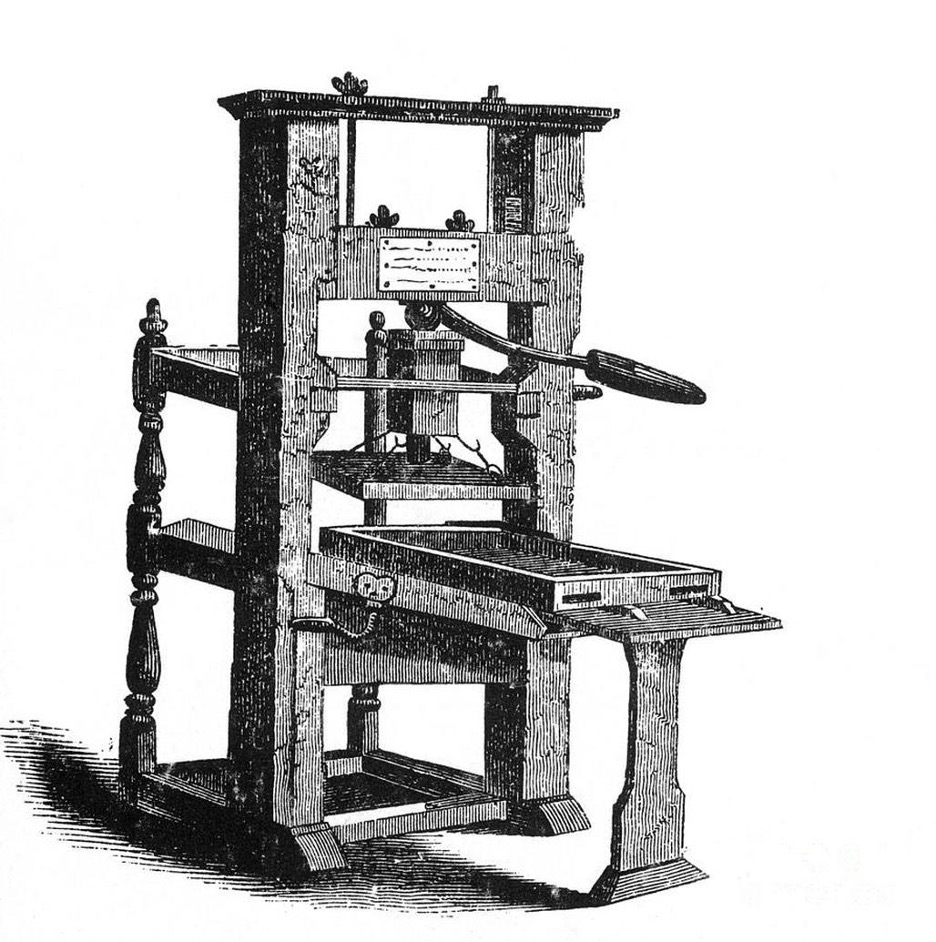I was inspired to base my second blog post for Judy’s Survey 141 class on Gutenberg after finding out he was put on trial and lost his invention.
I think the theme of geniuses being lost to time due to unfortunate circumstances is tragic and very prominent in our history. It is an interesting experience to relearn what one knows or what one has been taught. Thus, I found myself researching more about Gutenberg and the situation that got him written out of history for a considerable amount of time.

History’s acclaimed hustler
Johannes Gensfleisch zur Laden zum Gutenberg was a German craftsman and inventor, born in Mainz. He is most well known as the “inventor” of movable type. I use the word inventor lightly, as printing and movable type existed in many other places beforehand.
Gutenberg was infamous for entering into contracts with partners and keeping his process secret from them. This led many of his partners to second guess and suspect Gutenberg of crookedness. Often, partners would request to become a partner after such stunts. This supposed genius was considered by many to be a con man, requesting an insane amount of money and shutting his investors out when he received it.
The very invention that garnered him immortality was born from an intricate web of loans. The actual reason why anyone even knew of this creation was due to another partner suing him – legal documents revealed his recent financial proceedings. For his printing press, Gutenberg borrowed materials from a goldsmith, a carpenter, and had been requesting money for his secret project.

The trial of trials
As was typical for the time, artists often needed either a commission or a patron who would support them financially to produce their craft. Back then, writers were considered craftsmen and thus needed a source of money. Johannes Gutenberg was no exception, especially with his invention of the printing machine. To create his 42-line bible, he approached the rich financier Johann Fust to borrow money.
Fust agreed, lending Gutenberg 1550 guilders, a modern equivalent of about 1,066 CAD.
Gutenberg caught up in a quest for perfection, didn’t pay Fust back promptly enough. This led Fust to sue him.

Justice is served?
The treacherous outcome of the trial was the switch of ownership of Gutenberg’s printing machine. The invention which Gutenberg had spent many years of his life developing now lay in the hands of Fust.
In his last years of life, Gutenberg was provided with food and clothing by the Archbishop of Mainz. He was also exempt from select taxes, meaning he most likely died impoverished.

Sources:
https://en.wikipedia.org/wiki/Johannes_Gutenberg
http://www.gutenbergdigital.de/gudi/eframes/helma/not_g/not1000.htm
https://www.britannica.com/biography/Johannes-Gutenberg/Printing-of-the-Bible
https://search.credoreference.com/content/entry/ebbwmip/johannes_gutenberg/0
Leave a Reply